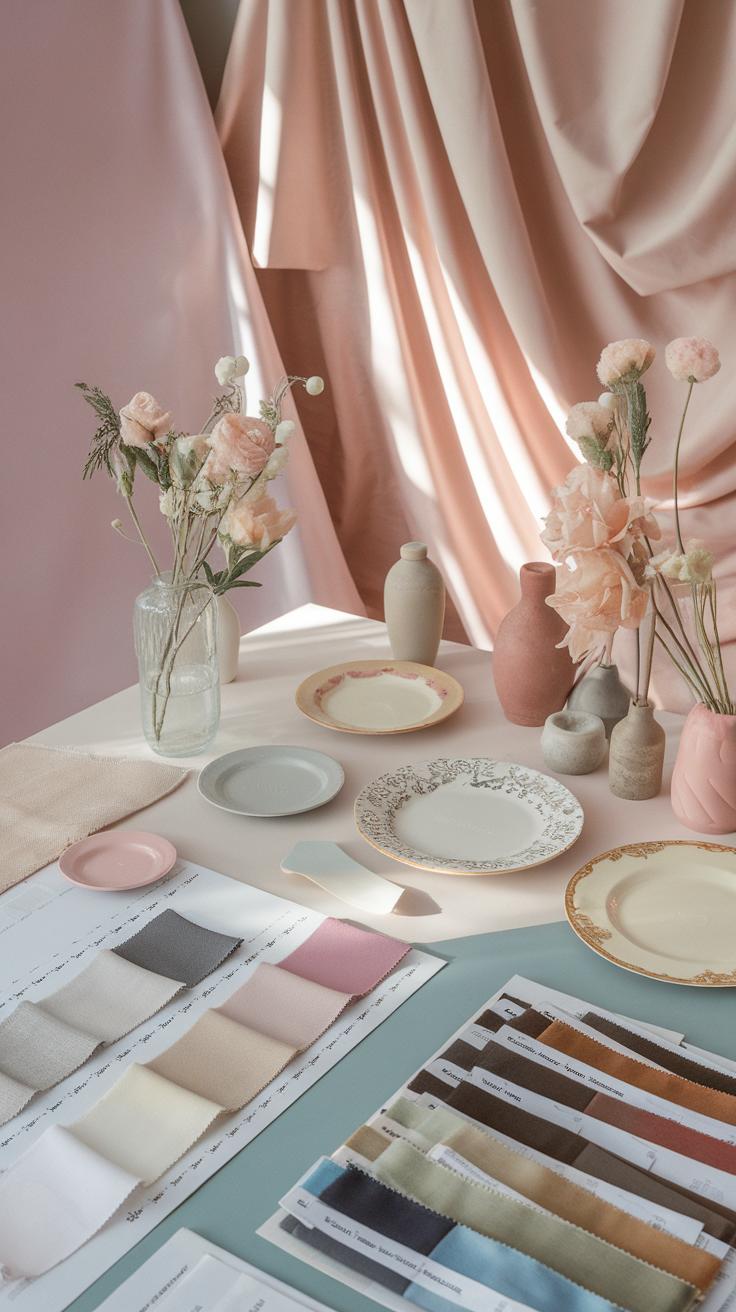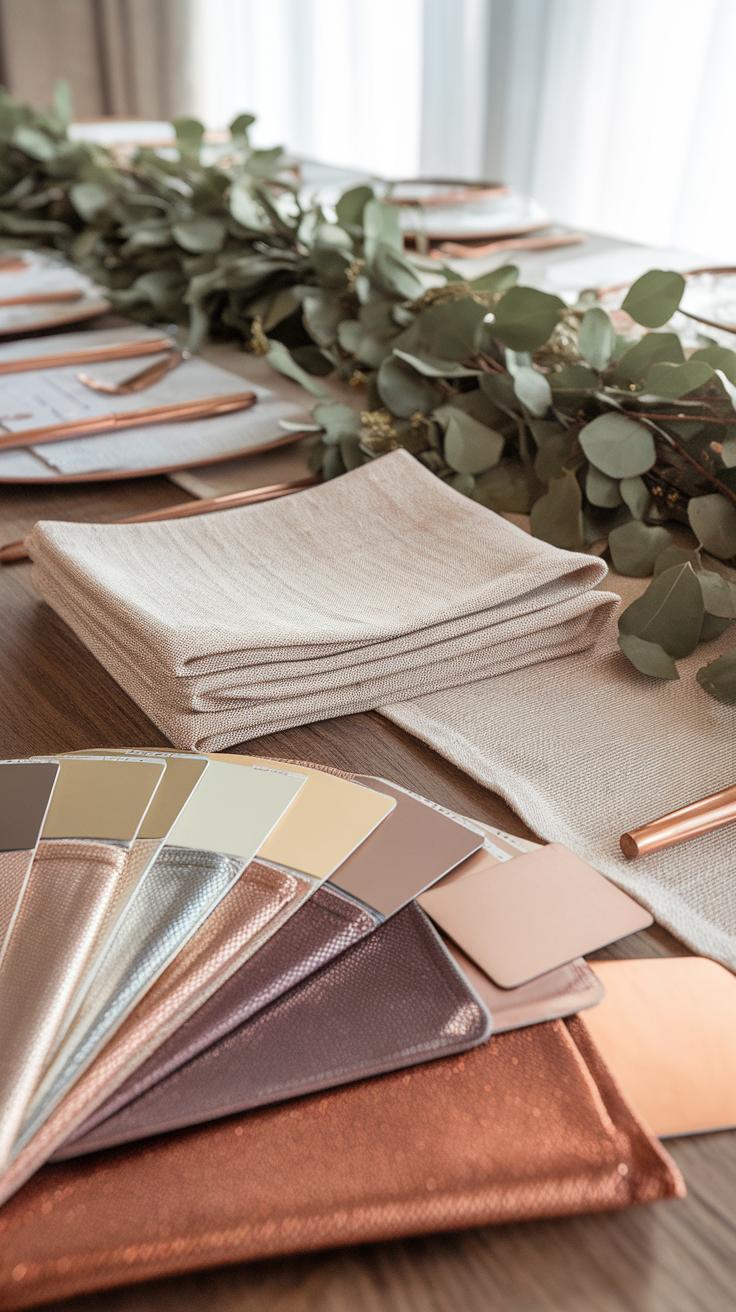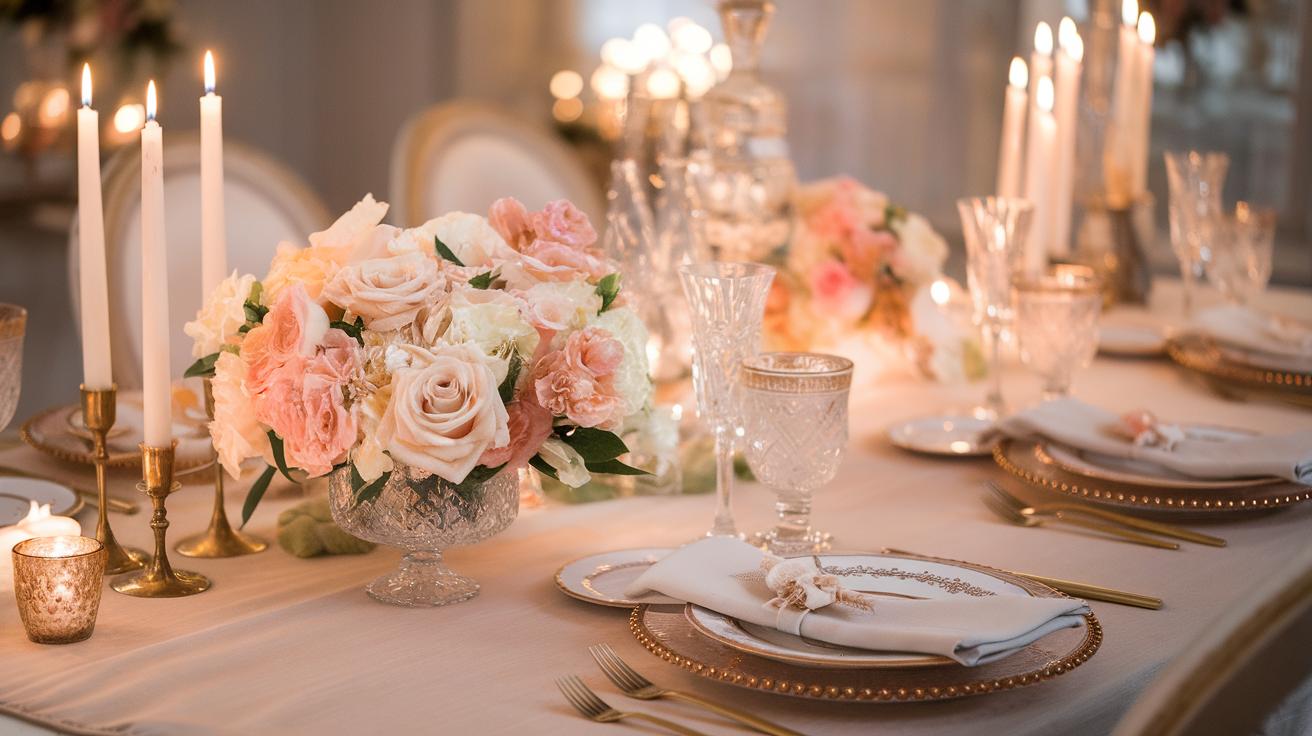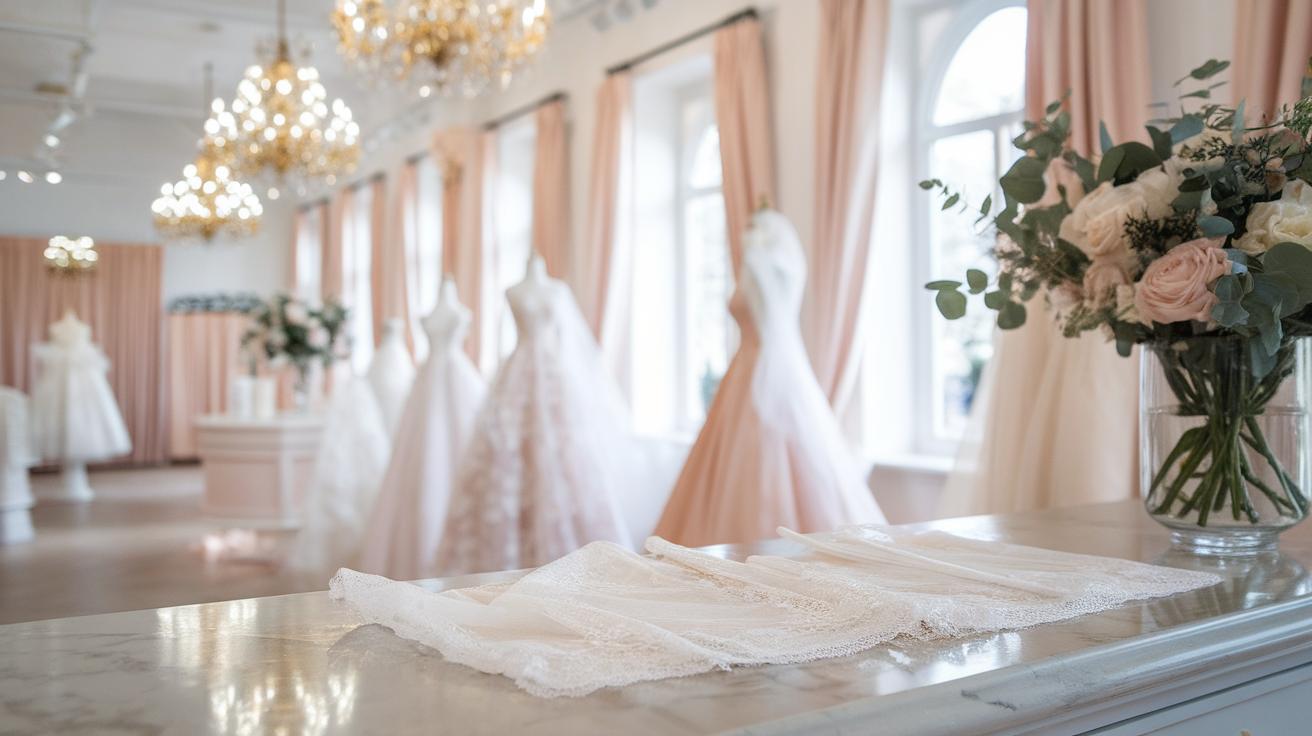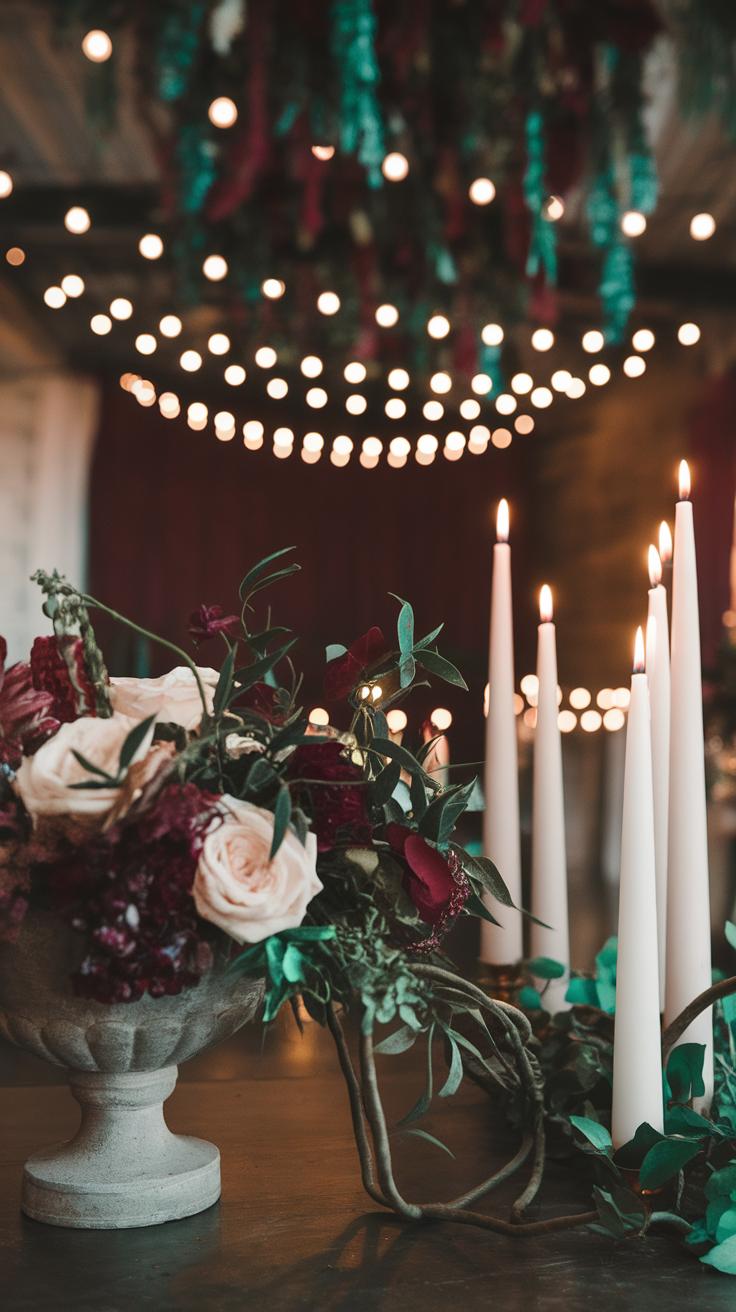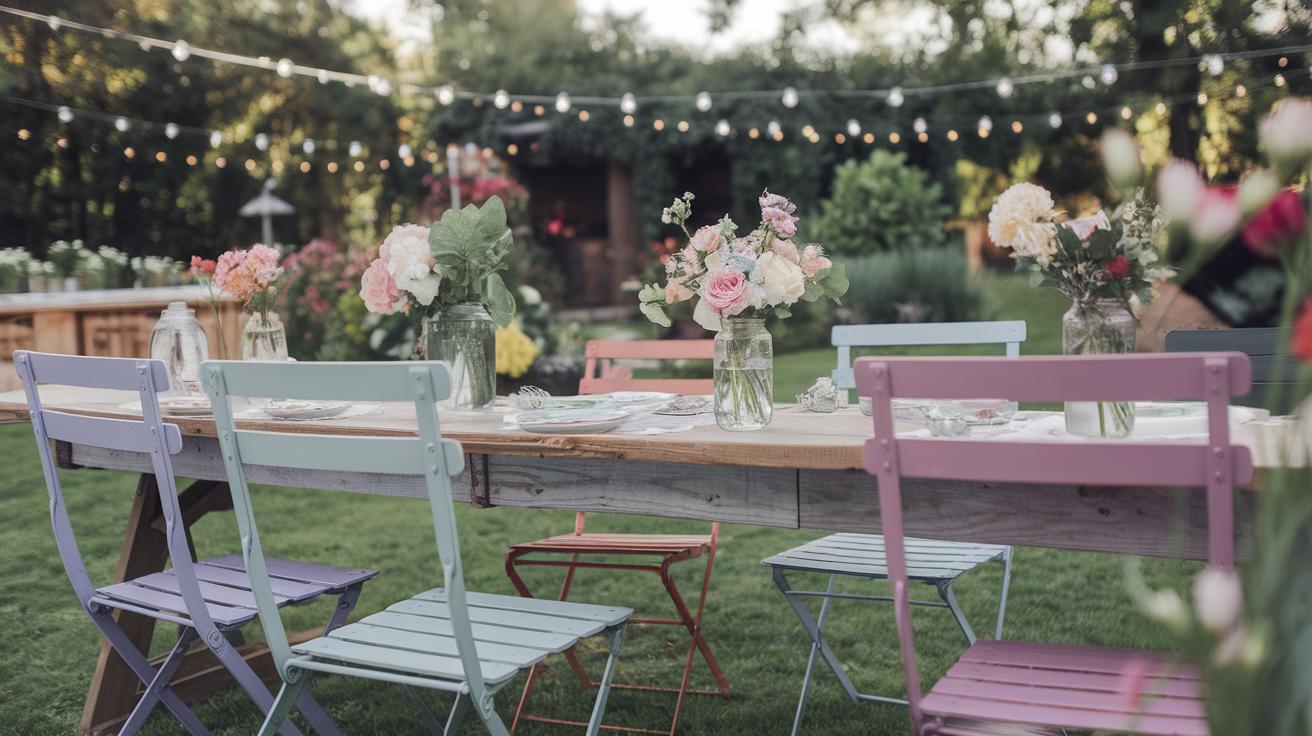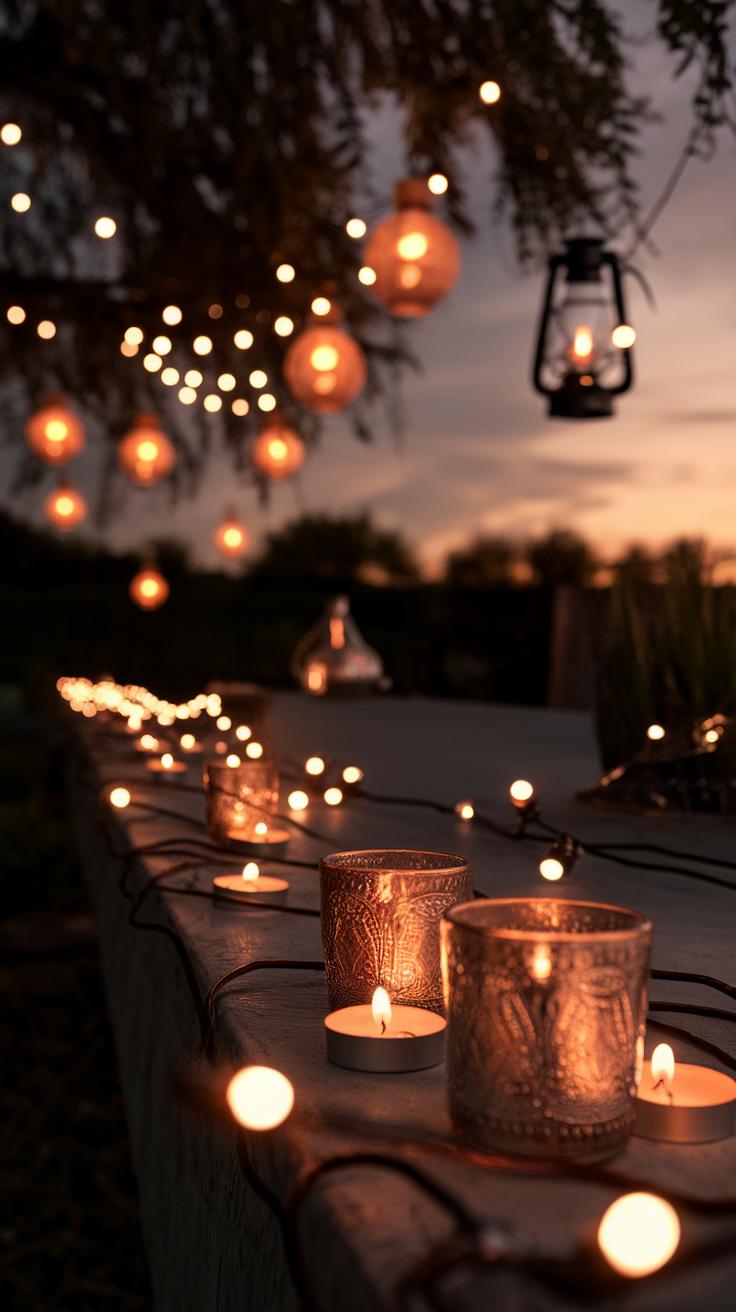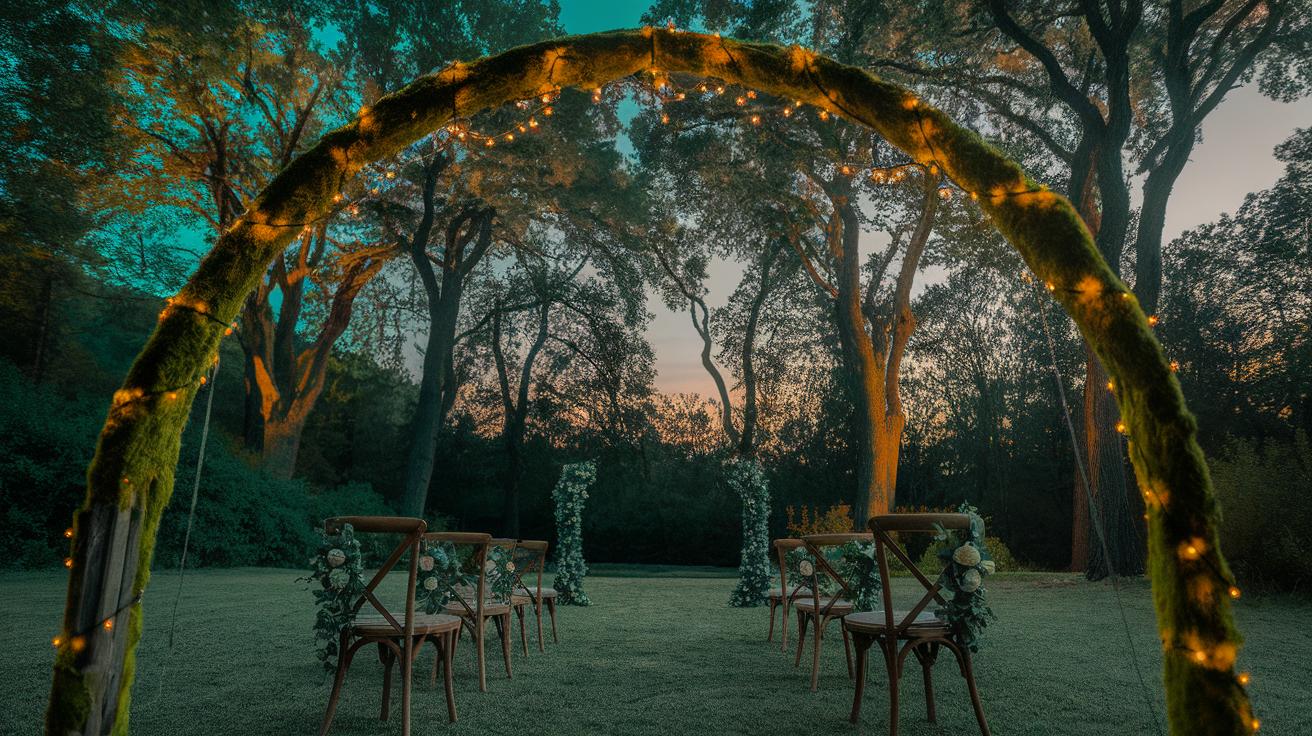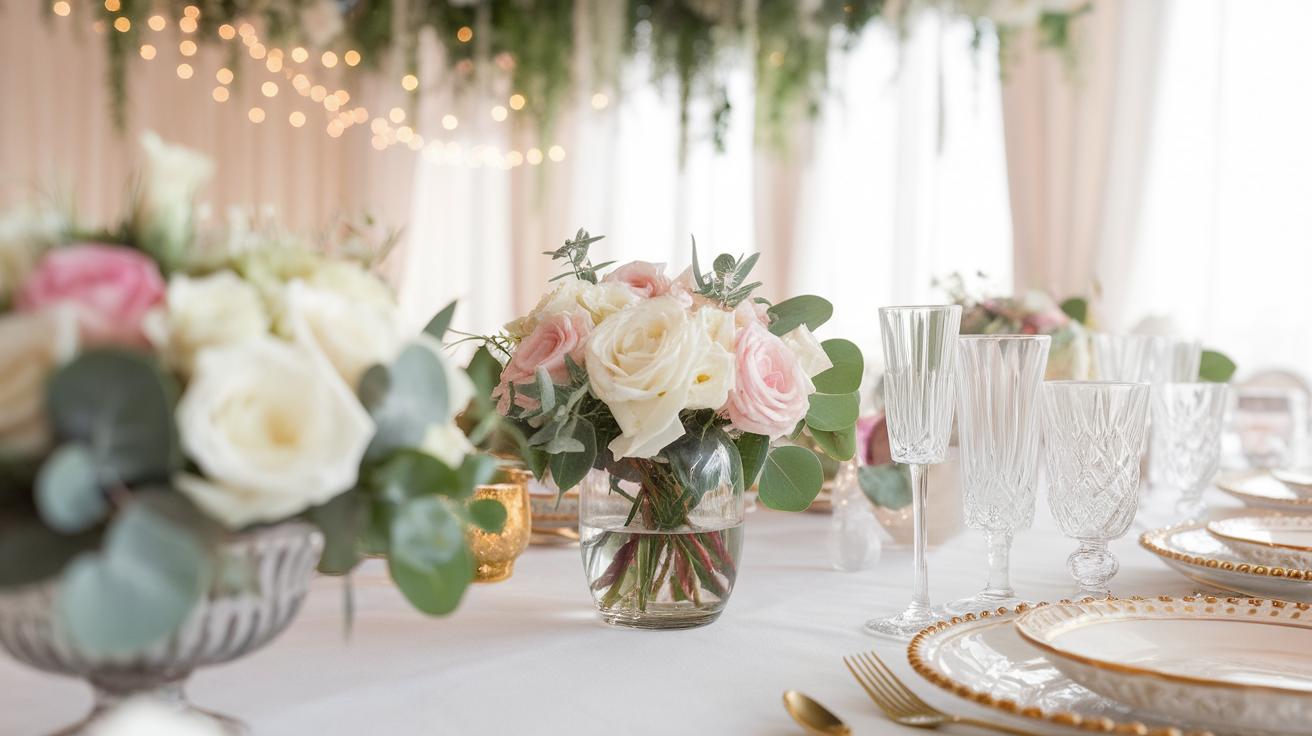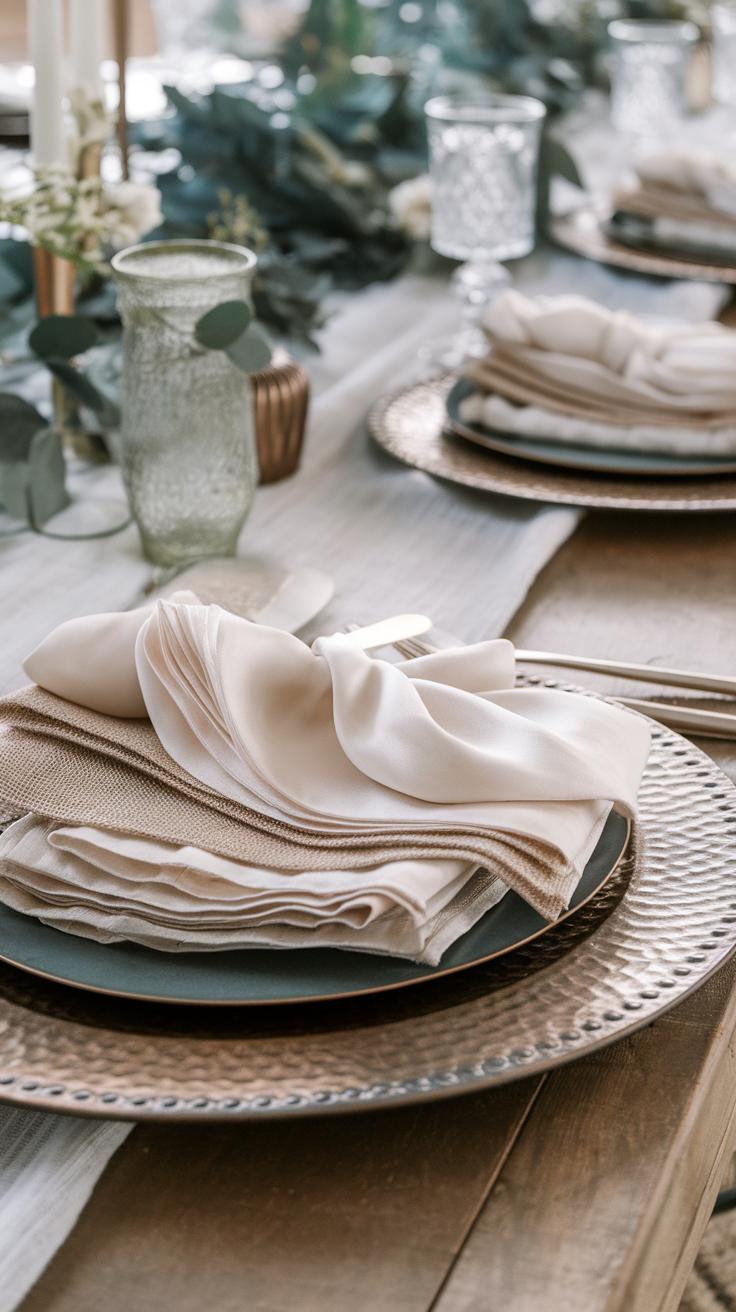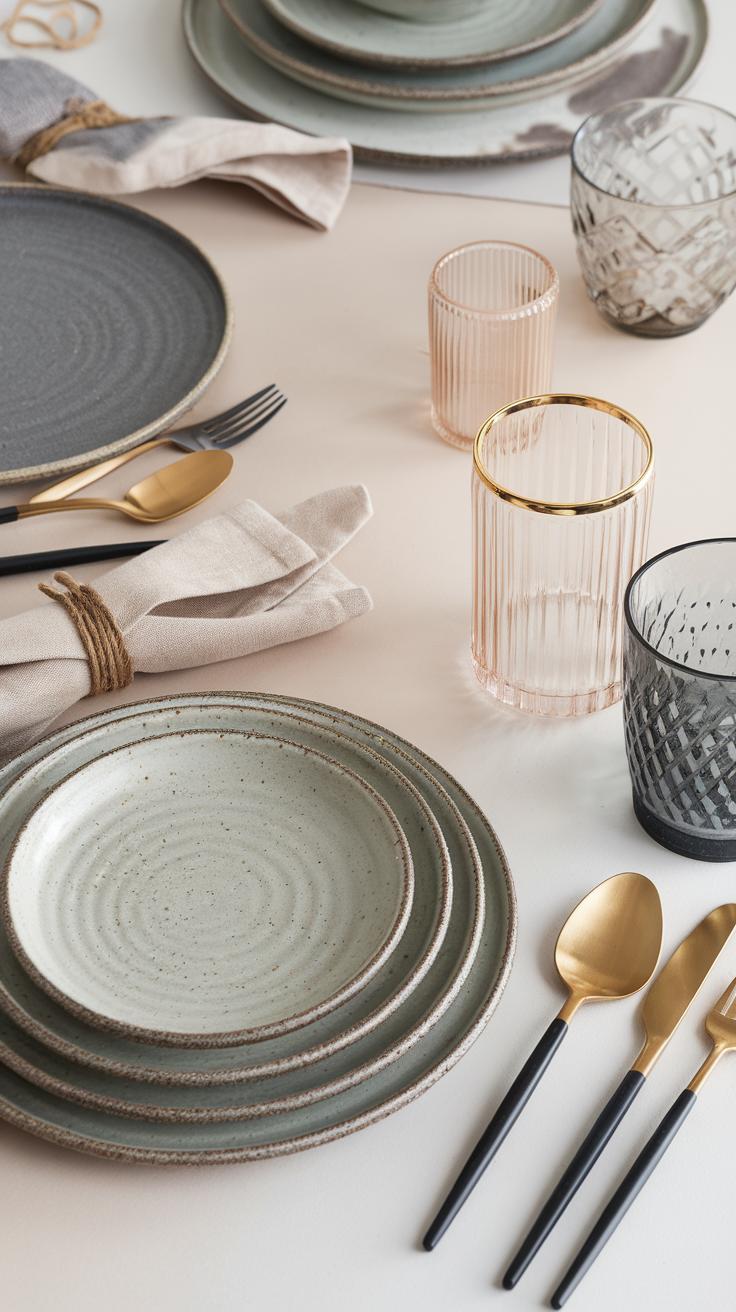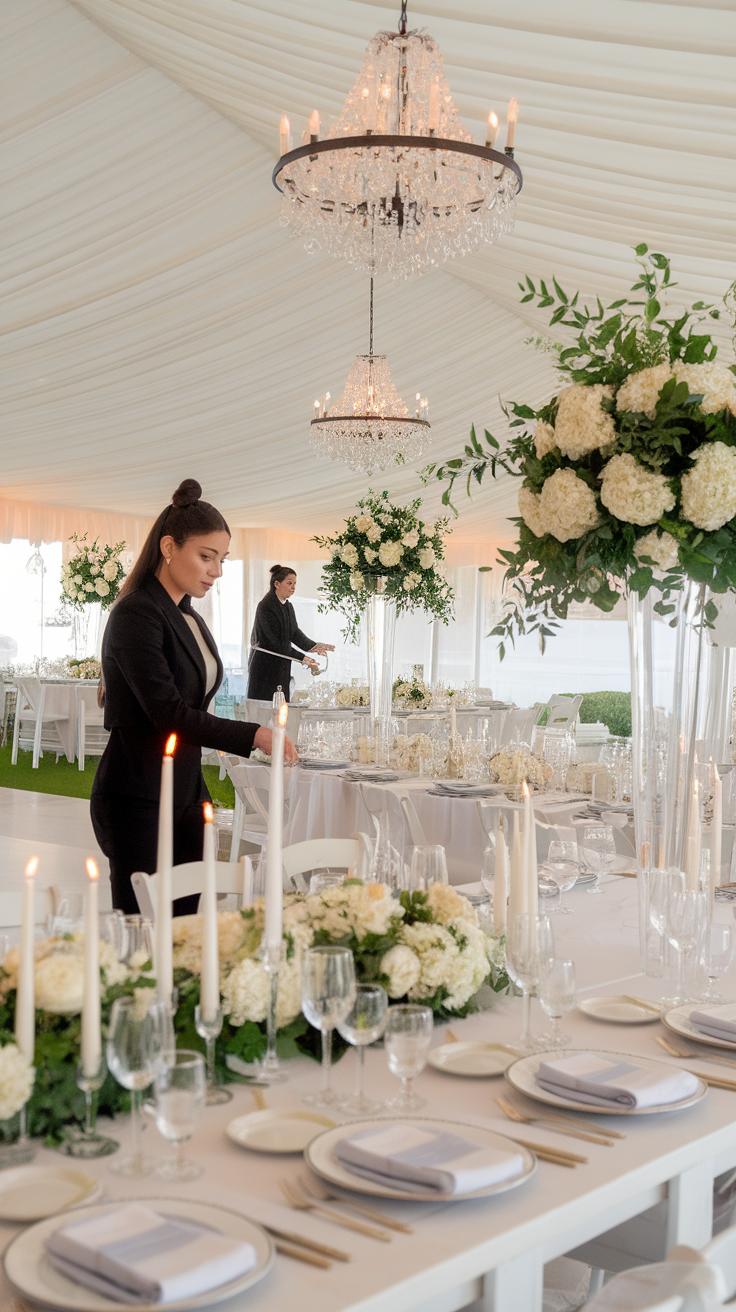Introduction
Wedding tablescapes set the mood and atmosphere for your special day. Every item on the table plays a role—from the centerpiece to the place settings. The ways you arrange decorations, flowers, and tableware affect the feeling your guests experience when they sit down. A well-planned tablescape adds beauty and shows your care for the event details.
Designing a wedding tablescape involves choices about colors, textures, and styles. You can customize elements to fit your wedding theme. The goal is to impress your guests and provide a welcoming, stylish setting. This article covers essential tips and ideas for creating elegant tablescapes. You will find inspiration for balancing aesthetics and function, ensuring your wedding tables capture attention and make the day memorable.
Choosing the Right Theme for Your Wedding Tablescape
Picking a clear theme helps your wedding tablescape feel connected and thoughtful. Start by thinking about the kind of mood you want for your celebration. Do you prefer the charm of rustic wood and wildflowers, the crisp lines and simplicity of a modern look, the nostalgia of vintage lace and heirlooms, or the timelessness of classic elegance?
Look closely at your wedding venue and overall style. Does the location inspire a theme? For example, a barn favors rustic, while a sleek city loft suits modern. Your theme guides every detail, directing the style of decorations, colors, and materials, so they blend naturally.
Choosing the right theme makes your tablescape more than just decoration. It creates an experience that fits your personality and setting, making your celebration truly memorable. What story do you want your tables to tell?
Matching Theme to Venue and Style
Your wedding venue sets a strong tone, so your tablescape should fit smoothly within it. Consider the style of the space before deciding your theme. Open fields, barns, or gardens lean toward rustic or vintage. Ballrooms and hotels often call for classic or modern styles.
Your personal taste matters too. Are you drawn to minimalist designs, or do you love ornate details? Combine your style with the venue’s vibe for a theme that feels natural. Ask yourself what kind of atmosphere you want guests to experience when they sit at your table.
Finding this balance builds harmony. It makes your entire wedding feel connected from the setting to the smallest detail on the tables.
Using Theme to Guide Decoration Choices
A well-chosen theme simplifies picking decorations. When your theme is rustic, rough wood chargers, burlap runners, and mason jar centerpieces fit perfectly. For modern, you might choose sleek glassware, geometric candle holders, and monochrome colors.
Colors, textures, and materials should all echo your theme. Vintage might call for antique silverware, delicate china, and pastel flowers. Classic themes bring in crisp white linens, crystal glasses, and lush greenery.
Using the theme as a guide helps you decide on each item with purpose. It avoids randomness and builds a clear, striking tablescape that feels polished and intentional. What decorations match your theme best?
Selecting Colors and Materials That Enhance the Tablescape
Choosing the right colors sets the mood for your wedding tablescape. Think about how different shades make people feel. Soft blues and greens can create a calm and relaxed atmosphere, while bold reds or golds bring energy and warmth to the table. Your color palette must match the tone you want to set for your celebration.
Materials also shape the look and feel of your tablescape. Smooth linens, delicate china, gleaming glassware, and unique decorative pieces each add a layer of interest. Selecting fabrics with different textures, like crisp cotton or flowing silk, adds depth.
Combining colors and textures needs balance. Pair bright colors with neutral tones to avoid overwhelming your guests. Mix matte and shiny surfaces to provide visual contrast. Ask yourself if each piece works together to create a unified and inviting table setting.
Creating a Balanced Color Palette
Start with a base of neutral colors such as ivory, gray, or beige. These colors calm the tablescape and help accent colors pop without clashing. Choose two or three main complementary colors to anchor your design.
Complementary colors sit opposite each other on the color wheel and create pleasing contrast. For example, blue and orange or purple and yellow can work well in moderate amounts. Use one of these as your primary accent and the other as a minor highlight.
Avoid using several bright or bold colors at once. Too many strong hues can compete for attention and feel chaotic. For a safer choice, stick to variations of one or two colors combined with neutrals. This keeps the focus on elegance and harmony.
Choosing Materials to Add Texture and Interest
Select materials that bring variety and style to your tables. Linen tablecloths feel soft and inviting, while velvet runners add richness. Consider mixing metal finishes like brushed silver with gold accents to add subtle shine.
Natural elements such as wood chargers, stone coasters, or greenery introduce an organic touch. These textures break up smoother surfaces and create a tactile experience for guests.
Try grouping similar textures in odd numbers for visual appeal. For example, place three wooden elements alongside smooth glass and soft fabrics. Keep the material palette limited to three or four types to maintain a clean and balanced look.
Designing Centerpieces That Capture Attention
Creating wedding table centerpieces that impress your guests starts with choosing elements that fit your overall theme and draw the eye. Floral arrangements bring natural beauty, while candles add warmth and intimacy. Themed objects can reflect your personal story or add a unique flair to your tablescape.
Size matters when selecting centerpieces. Large pieces can create stunning focal points but risk crowding the table. Smaller, carefully arranged items may work better for guest comfort. Consider shapes that sit low or rise slenderly to avoid blocking views.
Placement should allow guests to interact easily. Centerpieces positioned in the middle keep the table balanced and ensure no guest’s view is obstructed. Think about how guests will dine and converse. Your goal is to make each table inviting, elegant, and comfortable.
Selecting Centerpiece Types
Centerpiece styles vary from tall floral towers to low, lush bunches. Tall arrangements create dramatic statements but can make conversation harder if too dense. Low centerpieces encourage interaction and let guests see each other clearly.
Natural designs use greenery and flowers for a fresh feel. Modern centerpieces may include glass, metals, or abstract shapes for a sleek look. Which style matches your vision? Consider the vibe you want your tables to send to your guests.
Think about the space available. Tall centerpieces work well in large rooms with high ceilings. Low designs are often better in intimate settings. Both styles can impress when thoughtfully chosen.
Arranging Centerpieces for Elegance and Function
Balance your centerpieces across the table to avoid crowding one side. Place items centrally so they anchor the design and do not interfere with plate or glass placement.
Keep centerpiece height at eye level or below to avoid blocking conversations. If you choose taller flowers, use narrow vases or arrange blooms to leave sightlines clear. Candles should be positioned to provide glow without blowing out or causing discomfort.
Spacing matters too. Leave enough room for guests to eat and place their drinks without knocking over decorations. Arrange elements so every guest enjoys an elegant view while dining comfortably. Could your centerpiece be beautiful without getting in the way?
Incorporating Lighting to Enhance Ambiance
Lighting plays a key role in setting the mood for your wedding tablescape. It draws attention to your centerpieces and creates warmth that guests can feel. Candles offer a soft flicker that adds romance and charm. String lights contribute a gentle glow that brings a festive yet intimate atmosphere. Lanterns add structure and visual interest, working well with rustic or outdoor settings.
You want your lighting to make guests feel welcome without blinding or distracting them. Position lights so they highlight important elements like floral arrangements or place settings. Safety matters, especially with open flames; keep candles away from drapes or paper decor.
Ask yourself how you want your guests to experience the celebration. Should your lighting whisper elegance or add a touch of whimsy? Balancing brightness and shadows creates an unforgettable tablescape that reflects your style and keeps your celebration memorable.
Choosing Lighting Types for Tablescapes
Choosing the right lighting depends on the atmosphere you want and your venue’s rules. Candles provide warm, natural light and work well for smaller, intimate tables. However, they need constant supervision and sturdy holders to avoid accidents.
Fairy or string lights deliver soft, even lighting and can be draped around centerpieces or woven through greenery. These lights require electricity but are safer and simpler to maintain than candles. Electric LED lights offer consistent brightness and come in many styles to match your decor.
Consider the time of day and weather if you’re outside. Candles create evening romance, while string lights sustain glow after sunset. When would you prefer your tablescape to shine the most? Use lighting strategically to highlight those moments.
Placing Lights for Maximum Effect
Arrange lighting to illuminate the table gently and avoid overpowering guests. Candles look best when grouped in clusters or mixed with other elements to create depth. Keep them at a safe distance from flammable fabrics like napkins and runners.
String lights can frame the perimeter of the table or wrap around centerpiece bases to add subtle sparkle. Avoid hanging them so low that guests might brush against cords or bulbs.
Try standing back and looking from different angles before your event. Does the light enhance your key details without glare? By placing lights thoughtfully, you help guests enjoy the setting comfortably and safely throughout the celebration.
Selecting Linens to Tie the Tablescape Together
Choosing the right linens plays a key role in creating an elegant wedding tablescape. Tablecloths, runners, and napkins should match your overall design without competing with other elements. Think about the fabric’s texture—silk feels smooth and formal, while linen adds a natural, relaxed touch. Does your wedding theme call for crisp white or soft pastels? Solid colors provide a calm base, but subtle patterns can add personality without overwhelming the table.
Match your linens to the room’s lighting and centerpiece colors. For example, ivory linens pair well with warm candlelight, while cooler hues shine under daylight or fairy lights. Before your event, iron or steam linens to keep them wrinkle-free. Store napkins flat or use gentle folds to keep shapes neat. When layers like runners complement the tablecloth, aim for balanced contrasts in tone and pattern to unify the look.
Picking Fabric and Colors
Fabric choice influences how your tablescape feels to guests. Heavier fabrics like velvet create richness, while crisp cottons bring freshness. Imagine how your linens will look and feel when guests rest their hands or lean in to chat. Can you picture a rustic wedding with soft burlap runners, or a modern celebration featuring sleek satin?
Colors set your event’s mood. Warm shades add coziness, cool tones promote calm. Coordinate linens with flowers, chair covers, and place cards to build harmony. Don’t hesitate to test samples together under lighting conditions you expect for your reception. This step gives you confidence before making final decisions.
Presenting Linens for a Polished Look
Presentation matters. Lay tablecloths smoothly, allowing fabric to hang evenly on all sides. Avoid wrinkles by stretching the fabric gently and using clips if needed to secure corners. A crooked tablecloth draws attention away from the rest of your decor.
Napkin folding offers an opportunity to add style. Simple folds like rectangles or triangles look clean and classic. More creative shapes, such as fans or pockets for cutlery, impress guests and show attention to detail. Place napkins consistently with aligned edges to maintain symmetry across the table. Small touches, like a tie of ribbon or a sprig of greenery, can elevate your napkin’s look while keeping presentation tidy.
Arranging Tableware for Style and Practicality
When setting your wedding tables, combining style with ease of use makes the celebration smoother for everyone. The classic setup places the dinner plate in the center, with a fork on the left and a knife and spoon on the right. Glasses sit above the cutlery, usually with a water glass and a wine glass. This layout helps guests know where to find each piece without confusion.
You can also experiment by stacking plates or using unusual glass shapes to make your table stand out. Think about spacing too—leaving enough room for guests to eat comfortably keeps the experience pleasant. Matching your tableware’s colors and textures with your chosen theme creates harmony, encouraging a relaxed atmosphere. Imagine a rustic wedding with matte ceramic plates or a modern event featuring sleek, clear glass—each choice reinforces the look you want.
Standard versus Creative Table Settings
Basic table layouts follow simple rules: forks on the left, knives and spoons on the right, and glasses above. This tradition helps guests feel comfortable and confident. But when do you decide to bend these rules? Adding a dessert fork above the plate or replacing standard napkins with folded designs can add charm and surprise.
Try placing a plate charger as a base or switch the arrangement so the cutlery forms shapes or angles that catch the eye. You might place cocktail glasses beside the napkin instead of above the knives for freshness. These visual twists can spark curiosity and encourage conversations at your table.
Choosing Tableware That Complements Decor
Your tableware should blend with the theme without overpowering it. Soft-colored plates suit romantic looks, while bold patterns fit a lively atmosphere. Choosing glassware with tall stems adds elegance to formal tables. Matte finishes on cutlery bring subtle texture, while shiny silver may highlight a classic style.
Consider how shiny or muted your pieces are compared to your linens and centerpieces. If your tablescape emphasizes natural elements, wooden or stone-like plates can enhance the effect. If you want sparkle, engraved or gold-rimmed glasses create refinement. Choosing pieces thoughtfully makes the whole table feel balanced and intentional.
Adding Personal Touches That Delight Guests
Including personalized details in your wedding tablescape gives guests a deeper connection to your celebration. Small, thoughtful items create a memorable experience and show your appreciation. Personalized place cards that feature each guest’s name, paired with a brief note or a favorite quote, can spark conversations. Custom tokens like mini photo frames, engraved keepsakes, or meaningful trinkets allow guests to remember the event long after it ends.
Thematic details linked to your story add layers of meaning to the decor. For example, if you love travel, place small globes or vintage postcards at each setting. For book lovers, use stacks of favorite novels as centerpieces. These touches invite guests to engage with your journey and make each table unique.
How can you incorporate your interests into the design to surprise your guests? Personal touches bring a warm and inviting feel that elevates elegance beyond simple beauty.
Creating Personalized Place Settings
Craft place cards that share more than a name. Include a short message about your relationship or a fun fact about the guest. For example, you can write how you met or a shared memory involving that person. This transforms the place card into a conversation starter.
Small gifts can reflect your wedding theme or story. Custom-made candles, seed packets for planting, or homemade treats wrapped attractively add a personal element. Choose items guests will use or cherish, reinforcing your gratitude and making your tablescape more meaningful.
What story will your place settings tell? Thoughtful personalization turns simple seating arrangements into memorable moments.
Incorporating Thematic Details
Use symbols and items that connect with your background or hobbies for a cohesive look. A couple passionate about music could place vintage record covers or sheet music under glass plates. Nature lovers might use smooth stones or pressed flowers that represent special places.
Colors, textures, and objects can highlight your theme without overwhelming the setting. Match napkin rings to your wedding colors or use handcrafted pottery from a meaningful location. These details reflect who you are and soften the formality with authentic touches.
What objects tell your story best? Thoughtful thematic details deepen the emotional impact of your tablescape and invite guests to learn more about you as a couple.
Managing Tablescape Setup to Maintain Elegance All Day
Planning Setup Timing and Responsibilities
Allocate specific tasks to your team before the event day. Assign roles like arranging centerpieces, setting dinnerware, or placing linens. This division keeps work organized and efficient. Plan the setup schedule based on the venue’s access time and event start. Allow extra time for unexpected delays. Avoid leaving setup until the last minute; it adds unnecessary stress and may affect the final look. Communicate clearly with everyone involved so they know when and where to work. Ask yourself: are all tasks covered? Who oversees the overall process? Coordination avoids confusion and speeds up the setup. When everyone understands their role, the tablescape looks polished and ready well before guests arrive.
Maintaining Tablescape Condition
Keep essential supplies close by for quick touch-ups during the event. Bring extra napkins, polished glassware, or spare candles in case you need a fast fix. Assign someone to monitor tables regularly, ensuring nothing is out of place. Handle spills immediately by replacing linen or wiping surfaces carefully. Adjust lighting if it changes throughout the day to maintain the right mood. For example, dim overhead lights as daylight fades or add additional candles if the room feels too dark. Small fixes make a big impact. If a centerpiece droops or a card falls, fix it quietly and quickly before guests notice. How will you prepare for last-minute issues in your setup?
Conclusions
Effective wedding tablescapes take thought and planning. By focusing on key elements such as theme, colors, centerpieces, lighting, and linens, you create a cohesive look that feels welcoming. Using practical steps helps maintain order and encourages creativity. Remember to consider your guests’ comfort while keeping the design elegant.
Overall, your wedding tablescape is an expression of your taste and the celebration’s tone. Taking the time to craft each detail ensures the space is special and leaves a lasting impression. Use this guide to shape your tablescapes with confidence. This way, your guests will enjoy beautiful surroundings that complement your wedding day.


